Before travelling to Mexico City (CDMX) and knowing that this trip wouldn’t provide enough time to visit coffee farms or understand the industry in Mexico, I wanted to understand the cafe culture there, understand the unique flavour profiles of coffee that are specific to Mexican coffee beans, and take in the cafe culture vibe in one of the great metropolitan cities of the world, Mexico City. Over three days, we explored Mexico City on foot, visiting coffee shop to coffee shop along the way.
Mexico City is a city that takes their coffee shops and cafe culture seriously. From the traditional Café Emir (established 1936) and Café El Jarocho (established 1953) spread throughout the city to the more modern third wave cafes spread throughout La Condesa, Roma, Colonia Cuauhtémoc, Coyoacan, and beyond. In these neighbourhoods it is easy to find a modern cafe which will make you a pour over or high quality espresso with premium Mexican coffee beans.
Let’s start with the traditional long standing cafes, Café Emir and Café El Jarocho. Both of these cafe’s have a different style and you’ll run across them throughout the city as you start spending time in CDMX.
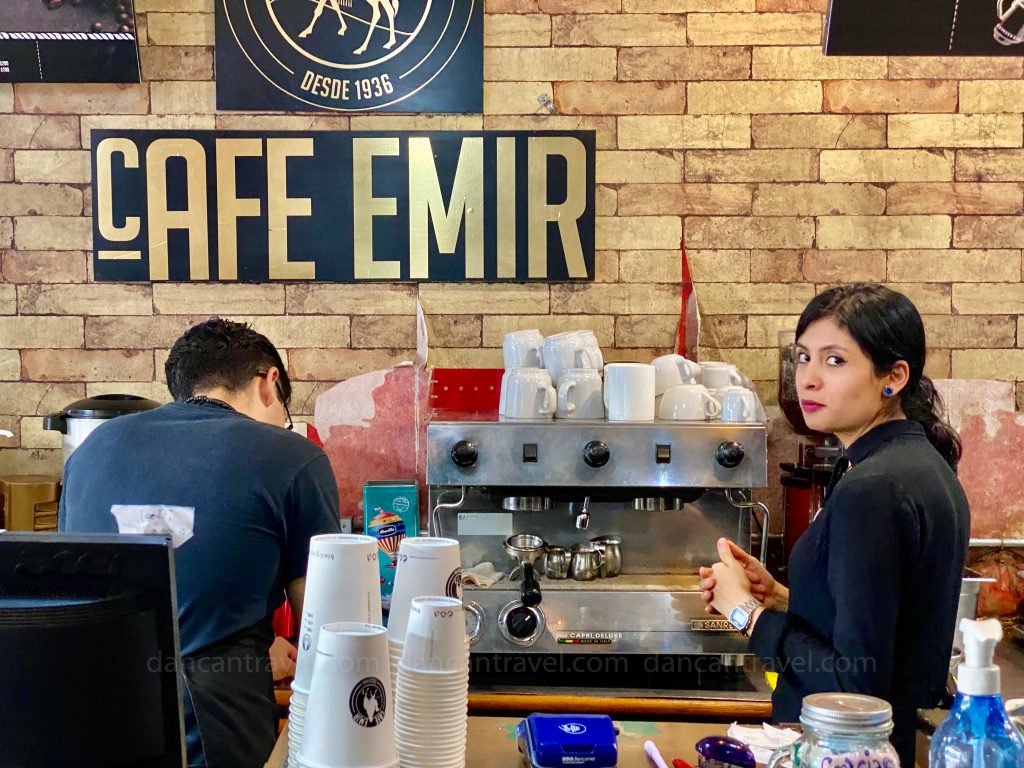
Café Emir was established in 1936; we visited the the Café Emir on Avenida Independencia in the historical centre as our first coffee shop stop. There seemed to be a lacking number of new and modern cafe’s in the historical centre, but we did stumble onto a great one that we were not able to find by google searches or google maps – more on that later. This particular Café Emir is combined with a book store which makes for a great vibe. I ordered an espresso and a donut. I must say, even after the good reviews I read online, the espresso tasted bitter like robusta and the donut wasn’t great either. Next time in Mexico City, I’ll go back there and give it another shot, and I’ll reserve judgement until then. This cafe, however, is a must if you want a good traditional cafe vibe in the centre of Mexico City, but if you are looking for top quality espresso or drip coffee, this probably isn’t going to meet your expectations.
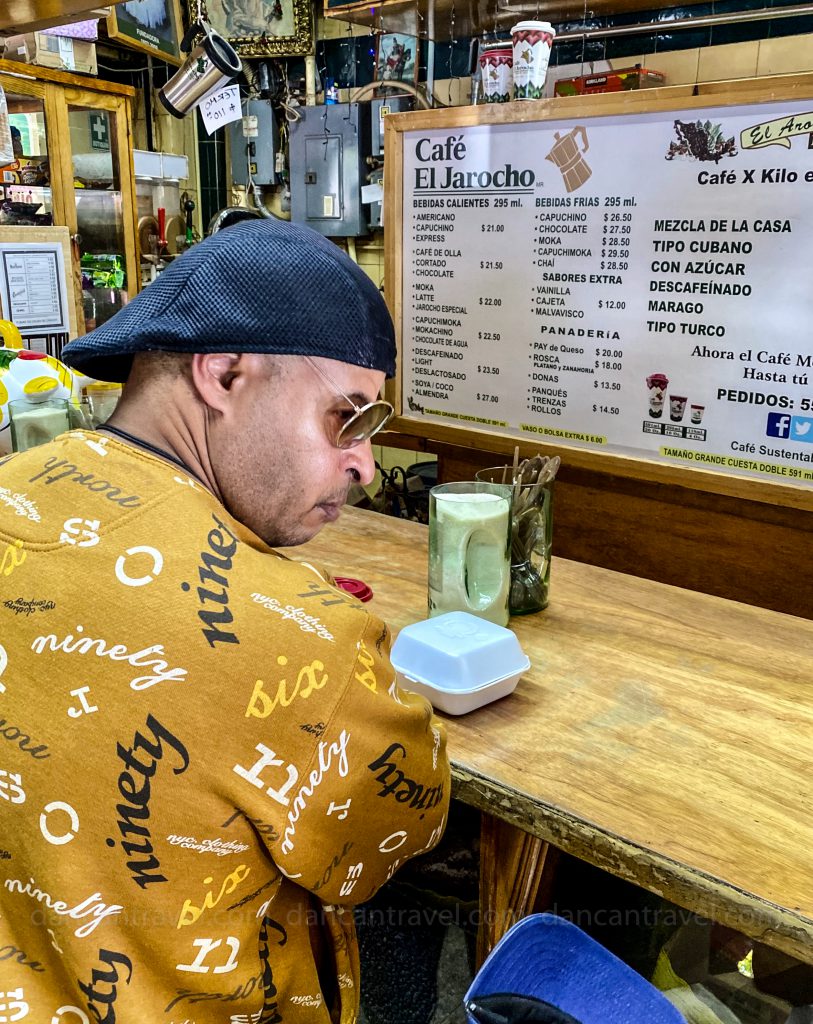
Café El Jarocho first open it’s original cafe in 1953 in Coyoacan, and there are now nine locations throughout Mexico City with a few more in Coyoacan. The original El Jarocho is somewhat popular with tourists, and next time, we’ll be sure to hit up the original, but any of the Café El Jaracho’s in CDMX suffice. We stumbled upon the first one we saw upon our walk into Coyoacan. It had a huge lineup with many different coffee and desert offerings. In an attempt to fit in, I ordered a moka coffee with milk and sugar. I didn’t like it, and then again I don’t like sugar in coffee at all, so definitely bad on my part. I loved the vibe, I’d go back just to order something again, sit outside, with lots of other people enjoying the very special vibe that exists at Café El Jarocho.
The Movement
Now that we have some of the traditional cafe’s out of the way, let’s dig into Mexico City’s 3rd wave cafe movement. For those new to the concept of what the “3rd Wave of Coffee” means, this tidbit from wikipedia sums it up well:
“The third wave coffee movement is a movement led by both consumers and manufacturers to consume, enjoy, and appreciate high-quality coffee. This movement considers coffee an artisanal food, like wine, whose consumption experience can be enhanced with greater education, connoisseurship, and sensory exploration beyond just a cup of coffee”
Source: Wikipedia
There are so many places to start when we consider modern third wave cafes in Mexico City. On our journey, I took to Google Search and Google Maps to help guide me. After quite a bit of research, I came up with a list, noted as a bunch of saved locations on Google Maps, and, although in three days I didn’t get an opportunity to visit all of them, I visited many, and many that I believe are some of the top cafe’s in Mexico City.
Premium Mexican coffee comes across with a very subtle tea like body, some sweetness sometimes, and a dry finish. It’s a really remarkable flavour profile that was consistent in each of the cups I had across all of the proper modern cafe’s we visited in Mexico City.
There is no shortage of quality third wave cafes in Mexico City, and most of them have even incorporated third wave pour over brewing methods as part of their default repertoire for coffee brewing. La Condesa, Roma, Colonia Cuauhtémoc, Coyoacan are great neighbourhoods to start your journey exploring great cafes in CDMX. Now, if you are living or staying anywhere in these or surrounding neighbourhoods you are in very good hands from a coffee perspective.
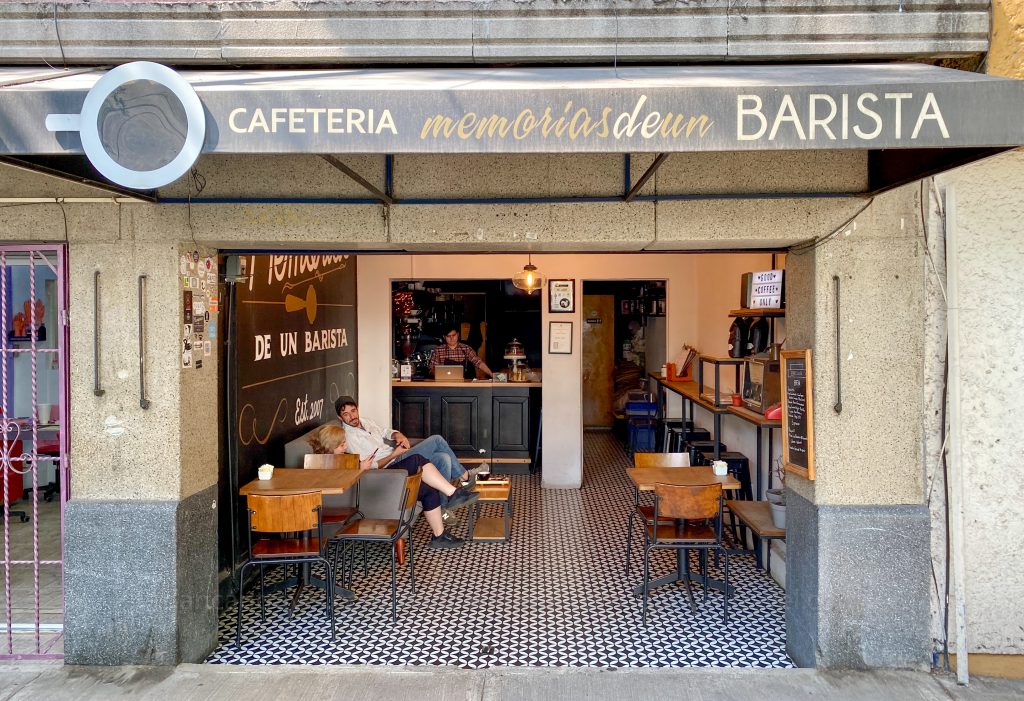
Café Memorias de un Barista on Calle Frontera in Roma Norte is a great cafe and one we made a point of visiting twice. They carry a variety of beans from Sonoata Tostadores which is under the same ownership as the cafe. We had a variety of options to choose from, and both times, I chose the Red Honey processed light roasted beans (Origin: Rancho Viejo in the state of Veracruz – Poxtla region. Variety: Typica. Alt: 1,050m). The owner and master roaster is Eduardo Juárez who is a barista and roasting champion in Mexico and came in 5th recently in the world roasting championship in Tawain.
The reason I had the same coffee on both occasions was because I liked it so much that I didn’t want to try another bean – that’s a bold statement!. In fact, the second time around, we bought four bags to bring home with us to consume ourselves and give to friends. The barista made the first batch as a pour over on the Kalita Wave and the second batch on the Hario v60. Both were remarkable, and ultimately, this was my favourite coffee I had in all of Mexico City.
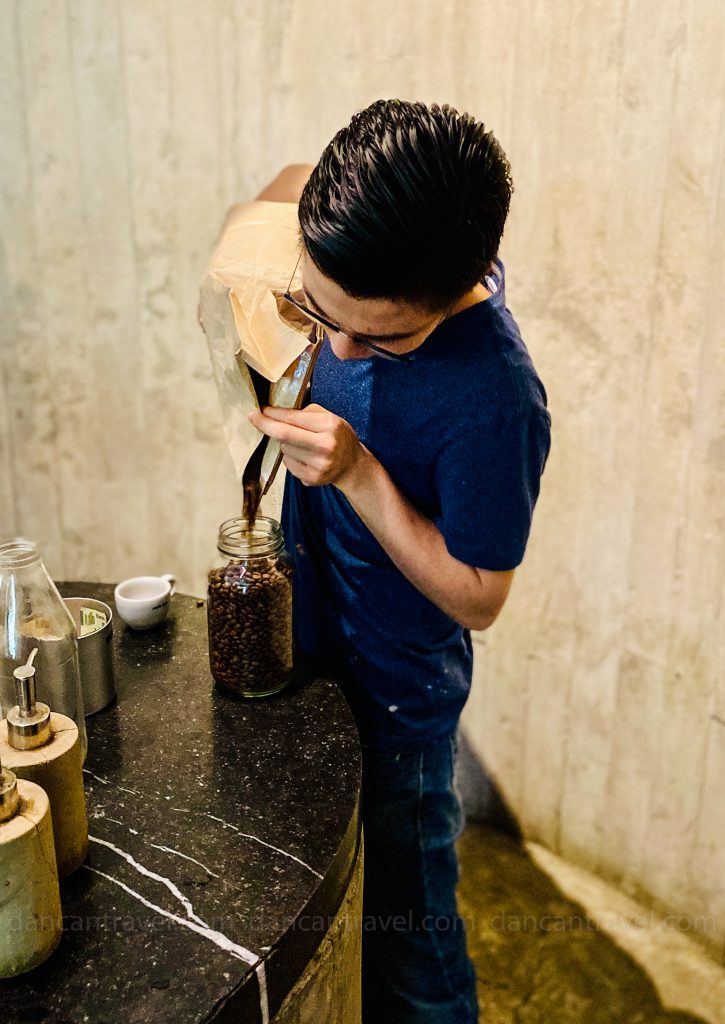
Buna Cáfe Rico is situated only a few blocks from Café Memorias de una Barista and situated just north of Plaza Río de Janeiro on Calle Orizaba in Roma Norte. With a friendly low key vibe, this modern cafe is located opposite the Italian restaurant Sartoria and shares an entrance. This is the official cafe for Tostadora Buna and it features a variety of their beans from different Mexican coffee growing regions. My choice was the “Tun-Dajá” beans grown in Oaxaca and roasted locally in Mexico City.
The barista was very good and very sociable, and in conversation I learned that they roast their beans in their roastery (tostadora) in Doctores (Calle Dr Erazo 172) and he even suggested that I stop by their roastery the following Monday to check out their facilities. He told me to find the black door and just knock. I was tempted, but unfortunately it was not in the cards for this trip. Doctores itself is an interesting neighbourhood that I have yet had the pleasure of experiencing. Known for Lucha Libre wrestling, a variety of chop shops, and some elements of organized crime, it doesn’t have a great reputation, but in reality, I suspect it’s a nice enough neighbourhood with nice people and good for a future visit.
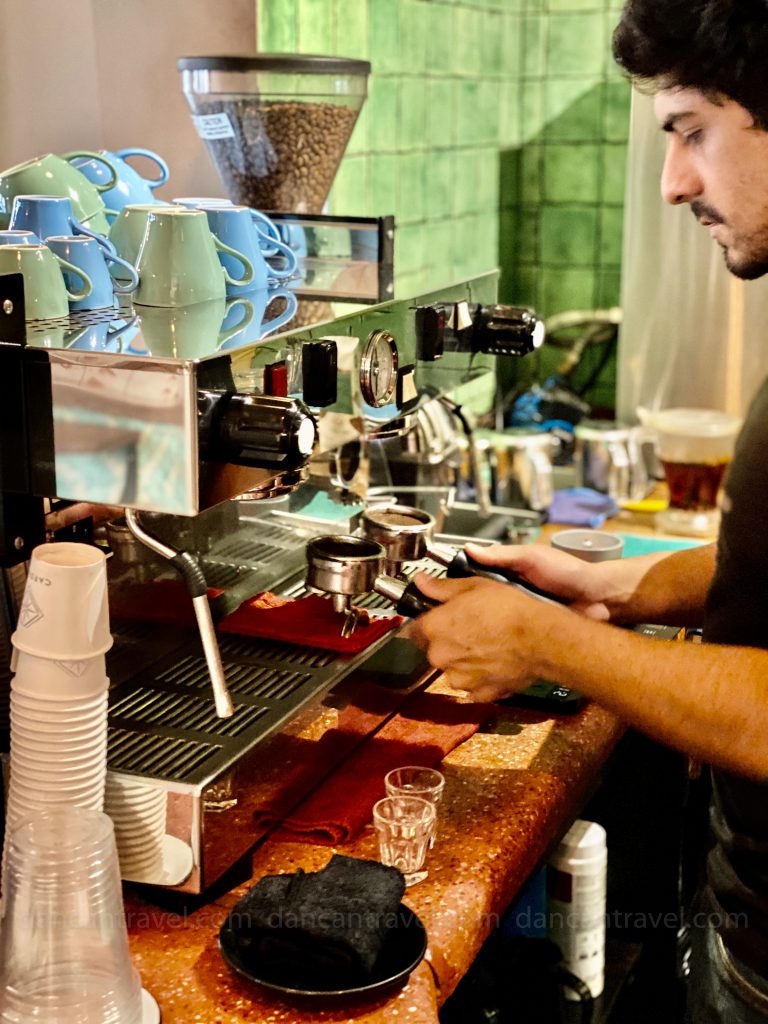
Cardinal Casa de Café on Calle Campeche in Hipódromo is a valid option as well. They feature a variety of coffee beans and can make you a variety of different types of coffee including espresso and pour overs. As it was getting late into the day for me, I went for a “Petite Noir” which would be most similar to a Ristretto shot – a very short espresso shot. I like Ristretto as it typically brings out a nice sweetness in the espresso and, in late afternoon, is less caffeinated than a full cup of coffee or full espresso shot. The Petite Noir was pulled well with great body and presentation. We stayed no more than 15 mins at a table on the sidewalk outside the cafe. It was nice. I finished up, and we left. Thirty seconds later, the barista came down the street running after me! I’m like “what, what, what’s up?”. “You didn’t pay!”. “Oh No!”. Completely inadvertently we had left without paying. In the cafe’s near where I live, we pay first, get the coffee, and then sit down. Many other places in the world will ask you to pay afterwards, and Mexico City is the same. It had slipped my mind this time.
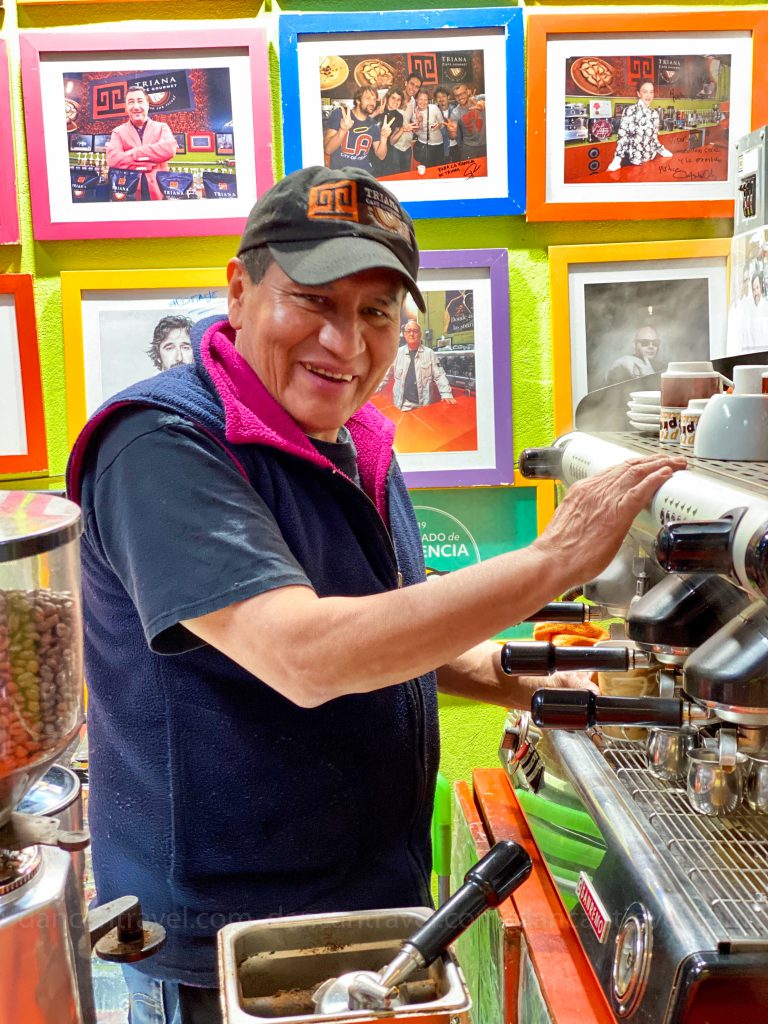
Triana Café Gourmet receives all kinds of raving online reviews, and I know why: Good coffee with an expert barista who loves pulling espresso shots and interacting with his customers. Triana Café Gourmet is located inside the Mercado del Carmen in Centro and just outside of the historical centre. We visited twice, and both times, we were welcomed with friendly and fun conversation while being introduced to other customers. This is a great cafe for quality espresso, but the whole Mercado del Carmen is an absolute must-go. There are a multitude of restaurants inside the market as well fruits, vegetables, meats, and spices – it feels like your typical Latin American “central market” but with a focus on food and gastronomy.

Cafe Avellaneda in Coyoacan is one of my favourite cafe’s in Mexico City. It features a variety of bean varietals (Geisha, Typica, Garnica, etc) from Veracruz and Oaxaca coffee regions from their own roaster branded Café con Jiribilla coffee. This was one of my favourite cafes for a few reasons. I had pour over coffee from two different regions at this cafe (yes, that’s a lot of coffee for a single sitting) and both were expertly made and delicious. The presentation was excellent, and the barista was laser focused on his task at hand and ensuring the quality of the coffee with careful water temperature control, measuring, weight, and pouring technique. I felt that the barista loved his craft and his expertise was clearly evident in the final resulting brew. The owner of the cafe has won coffee competitions in Mexico and beyond. There are good reasons that this cafe is considered by many to be one of the top third wave cafe’s in Mexico City.

Café Palacio is a modern cafe inside the El Palacio de Hierro Centro department store. El Palacio de Hierro is a chain of upscale department stores across Mexico, and if you find yourself in the historical centre and are searching for a modern third wave cafe, this might be your best bet. They feature a variety of different beans from different producers as well options for espresso and pour over. Being part of a large chain of department stores, it’s definitely a “corporate” cafe, so it may lose a few cred points based on that alone, but it does have an upscale vice. If you are in the historical centre, it’s worth it to check it out.
Mexico City is clearly head and shoulders above most large metropolitan cities in the world when it comes to the third wave coffee movement. They even have pour-over mini coffee bars in the lounges at MEX (airport)! I was impressed as I stumbled upon more and more cafes serving premium coffee with a variety of brew methods neighbourhood after neighbourhood. As a very walkable city, you could knock off a dozen cafes or more in a single day pretty easily if you were so inclined. I recommend Mexico City as a coffee destination, but if you don’t like coffee that’s fine too – it’s one of the worlds most interesting and fun cities with or without coffee! Good luck on your own adventures in CDMX.




